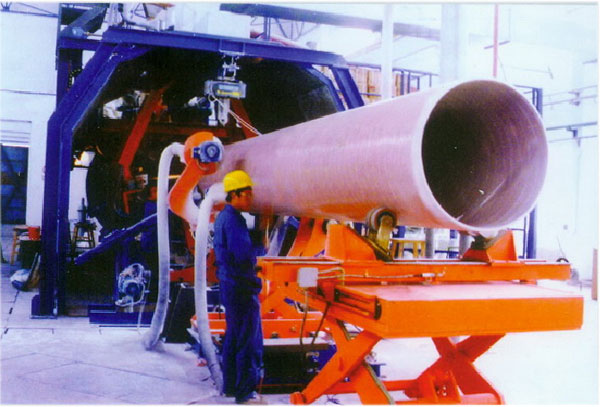
The process has become highly automated. Which requires an extensively capital investment in the winding machine, which permits adjustment of the helix angle on an automatic basis. Continuous filament glass is taken from a creel and passes over a base of infrared lamps and then over an applicator that spins constantly in a resin bath. The warmed yarn provides better resin pickup. The squeeze rolls leaving the bath squeezes out the bulk of the excess resin. Another bank of lamps may e used to promote further resin penetration into the fiber, after which it passes onto to winding head and from there onto the rotating mandrel.
The winding head may be manually operated or programmed to perform to the design requirements. A wind angle of 54.75º is commonly employed and results in a 2:1 hoop-axial ratio. This is the optimum for internal pressure requirements. Other wind angles, such as 90º or 0º or combination of the two, permit the hoop-axial relation ship to be changed to suit the design requirements. All the polyesters, vinyl ester, epoxy resins have been used widely with this process.
The GRP pipe is continuously manufactured due to continuous transfer of the steel band. The shaped GRP pipe is automatically shifted out of the production line after cutting. Thus it has the characteristics of high production efficiency and low consumption of raw materials.
Infrared heating mechanism provided in machine which provide sudden curing of resin and it allow t he pipe to move further.

Copyright © . EPP Composites Pvt Ltd.